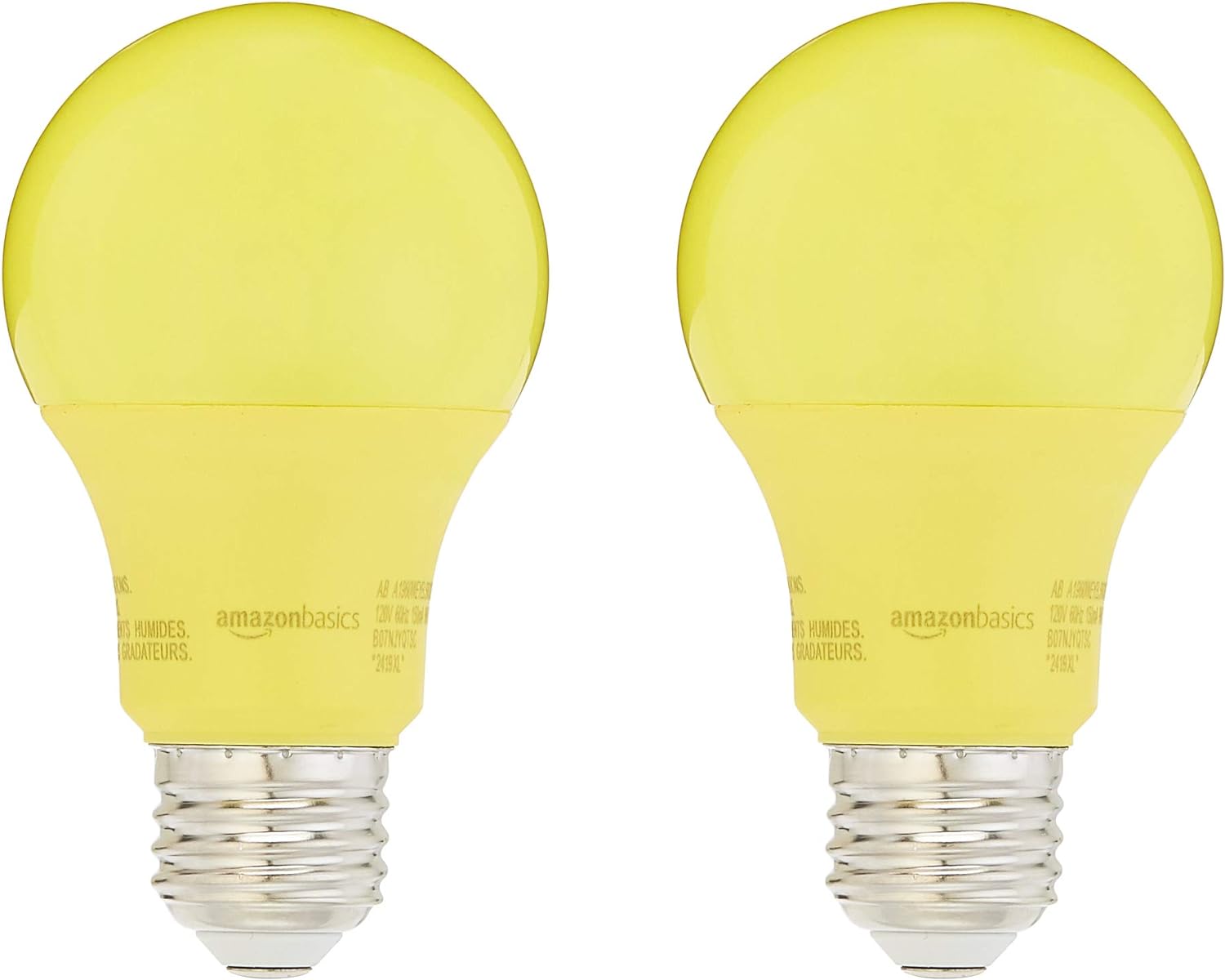Home>Home Appliances>Home Automation Appliances>How Many Watts Does An Alexa Use


Home Automation Appliances
How Many Watts Does An Alexa Use
Modified: October 20, 2024
Discover the energy efficiency of Alexa and other home automation appliances. Learn how many watts they use and optimize your smart home's power consumption. Gain insights into managing energy usage with these devices.
(Many of the links in this article redirect to a specific reviewed product. Your purchase of these products through affiliate links helps to generate commission for Storables.com, at no extra cost. Learn more)
Introduction
Welcome to the world of smart home technology, where convenience and innovation converge to redefine the way we interact with our living spaces. At the heart of this revolution lies Amazon's Alexa, a virtual assistant that has become an indispensable part of countless households worldwide. As we embrace the seamless integration of voice commands and automated tasks, it's natural to wonder about the energy consumption of these devices. In this comprehensive guide, we'll delve into the intriguing realm of Alexa's power usage, shedding light on the factors that influence its energy consumption and providing valuable tips for optimizing its efficiency. So, let's embark on this enlightening journey to unravel the mysteries of Alexa's power consumption and discover how we can make the most of this cutting-edge technology while being mindful of energy usage.
Key Takeaways:
- Alexa’s power consumption ranges from 2.4 to 3.4 watts during regular use, dropping to 1.6 watts in standby mode. Factors like task intensity and connected devices influence its energy usage.
- To reduce Alexa’s power consumption, utilize standby mode, optimize smart home automation, and stay informed about updates. These practices promote energy efficiency and sustainability in smart home environments.
Read more: How Many Watts Does A Freezer Use?
Understanding Alexa
Alexa, developed by Amazon, is a virtual assistant powered by artificial intelligence. It is designed to respond to voice commands and perform a wide range of tasks, including playing music, providing weather updates, setting reminders, controlling smart home devices, and answering questions. Alexa operates through Amazon’s Echo devices, which come in various forms such as the Echo Dot, Echo Show, and Echo Plus. These devices are equipped with an array of microphones and speakers, allowing them to pick up voice commands from across the room and deliver clear, audible responses.
One of the key features that sets Alexa apart is its integration with smart home appliances. With the ability to connect to compatible devices such as smart lights, thermostats, and security systems, Alexa serves as a central hub for controlling and managing these appliances through voice commands. This seamless interaction with the Internet of Things (IoT) has made Alexa a cornerstone of modern home automation, offering unparalleled convenience and functionality.
Furthermore, Alexa’s capabilities are continually expanding through the integration of third-party skills. These skills, similar to apps, enable Alexa to perform a myriad of tasks beyond its core functions. Whether it’s ordering a pizza, requesting a ride, or practicing guided meditation, Alexa’s skills cater to a diverse range of needs, making it a versatile and adaptable virtual assistant.
As Alexa continues to evolve and adapt to user preferences, it’s essential to understand its power consumption to make informed decisions about energy usage and device management. By gaining insight into the energy requirements of Alexa and its associated devices, we can optimize their usage while minimizing environmental impact and energy costs.
Power Consumption of Alexa
Understanding the power consumption of Alexa and its associated devices is crucial for managing energy usage effectively. The power consumption of an Amazon Echo device, such as the Echo Dot or Echo Show, typically ranges from 2.4 to 3.4 watts during regular operation. When idle or in standby mode, the power usage decreases significantly, often dropping to around 1.6 watts. These figures may vary slightly based on the specific model and generation of the Echo device, but they provide a general overview of the energy requirements of Alexa-enabled devices.
It’s important to note that the power consumption of Alexa extends beyond the Echo device itself. When Alexa is actively performing tasks, such as streaming music, providing weather updates, or controlling smart home devices, it may draw additional power from connected appliances and services. For instance, activating smart lights or adjusting thermostat settings through Alexa entails the energy consumption of these respective devices, which should be factored into the overall power usage attributed to Alexa’s operation.
Furthermore, the power consumption of Alexa can fluctuate based on the intensity and frequency of its usage. Engaging in prolonged interactions, such as continuous music playback or extended voice commands, may lead to higher energy consumption compared to sporadic, brief interactions. Understanding these nuances can help users make informed decisions about integrating Alexa into their daily routines while managing energy usage effectively.
As Alexa continues to evolve and introduce new features, it’s essential to stay informed about any changes in power consumption patterns. Whether through software updates, hardware enhancements, or expanded functionalities, monitoring the power requirements of Alexa and its associated devices is key to promoting energy efficiency and sustainability in smart home environments.
To estimate the power usage of an Alexa, you can check the label on the device or look up the specifications online. Typically, an Alexa uses around 3-5 watts when in use, and less than 2 watts when in standby mode.
Factors Affecting Power Usage
The power usage of Alexa and its associated devices is influenced by various factors, each playing a role in determining the overall energy consumption. Understanding these factors is essential for optimizing energy efficiency and making informed decisions about device usage. Here are the key elements that can affect the power usage of Alexa:
- Device Model and Generation: Different models and generations of Amazon Echo devices may exhibit variations in power consumption. Newer iterations often feature efficiency improvements and enhanced hardware, potentially leading to reduced energy usage compared to earlier versions.
- Task Intensity and Duration: The nature of tasks performed by Alexa, such as streaming music, conducting web searches, or controlling smart home devices, can impact power usage. Continuous and resource-intensive tasks may lead to higher energy consumption compared to lighter, intermittent interactions.
- Connected Devices: When Alexa interacts with smart home appliances, such as lights, thermostats, and security systems, the energy usage of these connected devices becomes intertwined with Alexa’s overall power consumption. Managing the power profiles of these devices is essential for optimizing energy efficiency.
- Volume and Sensitivity Settings: The volume level and microphone sensitivity settings on Echo devices can influence power usage. Higher volume levels and increased microphone sensitivity may lead to slightly elevated energy consumption during voice recognition and audio playback.
- Environmental Conditions: Ambient temperature and humidity can impact the operational efficiency of electronic devices, including Amazon Echo products. Extreme environmental conditions may affect power consumption and device performance, highlighting the importance of maintaining suitable operating environments.
- Software Updates and Features: As Alexa receives software updates and introduces new features and capabilities, there may be corresponding changes in power usage. Monitoring these updates and their potential impact on energy consumption is crucial for maintaining energy-efficient device usage.
By considering these factors and their influence on power usage, users can adopt strategies to optimize energy efficiency while leveraging the full potential of Alexa and its associated devices. From managing task intensity to staying informed about device enhancements, a proactive approach to energy-conscious usage can contribute to sustainable smart home environments.
Tips for Reducing Alexa Power Consumption
Optimizing the power consumption of Alexa and its associated devices is essential for promoting energy efficiency and minimizing environmental impact. By implementing the following tips, users can effectively manage energy usage while harnessing the convenience and functionality of Alexa:
- Utilize Standby Mode: When Alexa is not in active use, consider leveraging standby mode to reduce power consumption. Echo devices typically consume less energy when in standby, making it a practical option for periods of inactivity.
- Optimize Smart Home Automation: Efficiently manage smart home devices connected to Alexa by scheduling automated routines and adjusting settings to align with energy-saving preferences. This includes regulating lighting schedules, optimizing thermostat settings, and employing energy-efficient modes for connected appliances.
- Manage Device Placement: Position Echo devices in optimal locations to enhance voice recognition and minimize the need for increased microphone sensitivity, which can impact power usage. Strategic placement can contribute to efficient voice command execution and reduced energy consumption.
- Monitor Task Duration: Be mindful of the duration and intensity of tasks performed by Alexa. Limiting prolonged and resource-intensive activities, such as continuous music playback, can help manage power usage effectively while still enjoying the benefits of Alexa’s capabilities.
- Stay Informed About Updates: Stay updated on software enhancements and feature releases for Alexa and its associated devices. New updates may introduce energy-efficient optimizations and functionalities, providing opportunities to further reduce power consumption.
- Explore Energy-Efficient Skills: Discover and utilize Alexa skills that promote energy efficiency, such as smart home management skills that facilitate energy monitoring and optimization. These skills can contribute to a more sustainable and energy-conscious smart home ecosystem.
- Consider Energy-Efficient Devices: When integrating new smart home appliances with Alexa, prioritize energy-efficient models that align with sustainability goals. Selecting energy-conscious devices can complement efforts to reduce overall power consumption within the smart home environment.
- Regular Maintenance: Keep Echo devices and connected smart home appliances well-maintained to ensure optimal performance and energy efficiency. Periodic maintenance, including software updates, device cleaning, and system checks, can contribute to efficient power usage.
By implementing these practical tips, users can actively contribute to reducing the power consumption of Alexa and creating a more sustainable and energy-efficient smart home environment. Embracing energy-conscious practices while leveraging the capabilities of Alexa enables a harmonious balance between technological innovation and environmental responsibility.
Read more: How Many Watts Does A Projector Use
Conclusion
As we navigate the realm of smart home technology, the energy consumption of devices such as Amazon’s Alexa holds significant relevance in promoting sustainable and efficient usage. Understanding the power consumption of Alexa and its associated devices empowers users to make informed decisions about energy management while embracing the convenience and versatility of this innovative virtual assistant.
Alexa’s integration with smart home appliances and its diverse range of capabilities underscores the importance of optimizing power consumption to align with energy-conscious practices. By considering factors such as device models, task intensity, and connected devices, users can proactively manage power usage and contribute to sustainable smart home environments.
Furthermore, the implementation of practical tips for reducing Alexa power consumption offers a pathway to harmonizing technological innovation with energy efficiency. Leveraging standby mode, optimizing smart home automation, and staying informed about updates are among the strategies that enable users to minimize energy usage while maximizing the benefits of Alexa’s functionalities.
Embracing energy-efficient practices within the context of Alexa usage not only promotes environmental sustainability but also underscores the potential for responsible and mindful integration of technology into daily life. As Alexa continues to evolve and adapt to user needs, a proactive approach to managing power consumption ensures that energy efficiency remains a cornerstone of smart home experiences.
In essence, the journey to understanding and optimizing the power consumption of Alexa is a testament to the synergy between technological innovation, user empowerment, and environmental stewardship. By fostering a holistic approach to energy-conscious usage, users can fully embrace the transformative capabilities of Alexa while contributing to a more sustainable and responsible digital ecosystem.
Frequently Asked Questions about How Many Watts Does An Alexa Use
Was this page helpful?
At Storables.com, we guarantee accurate and reliable information. Our content, validated by Expert Board Contributors, is crafted following stringent Editorial Policies. We're committed to providing you with well-researched, expert-backed insights for all your informational needs.















0 thoughts on “How Many Watts Does An Alexa Use”